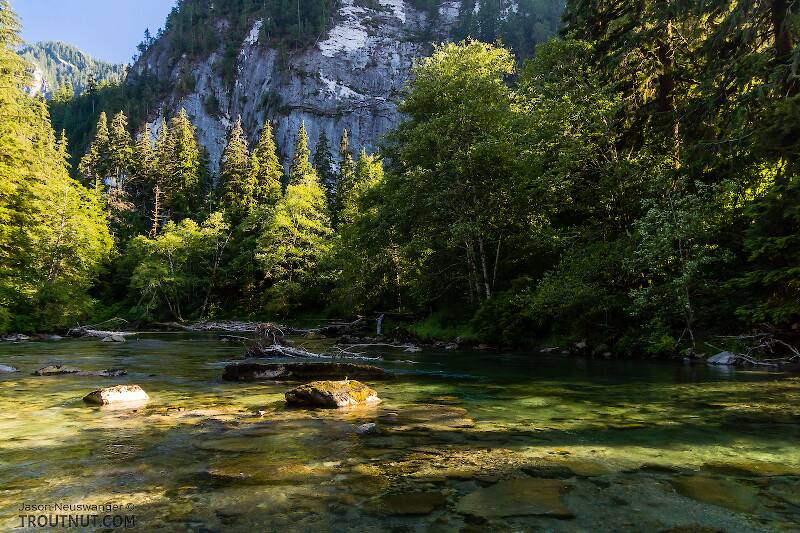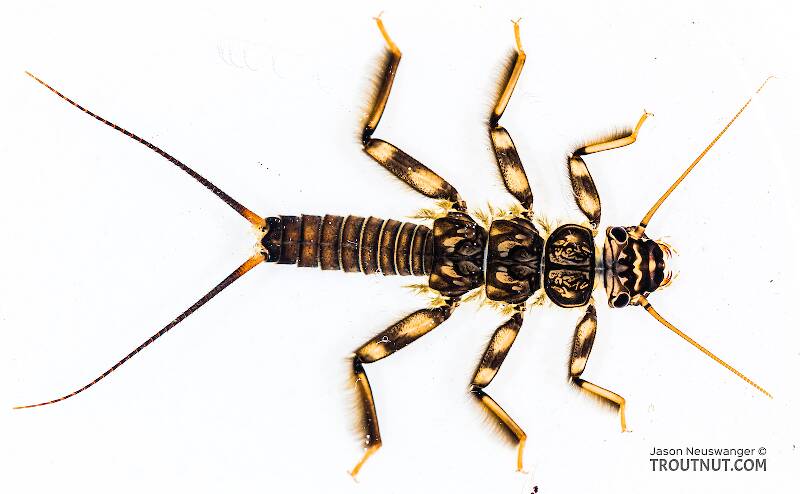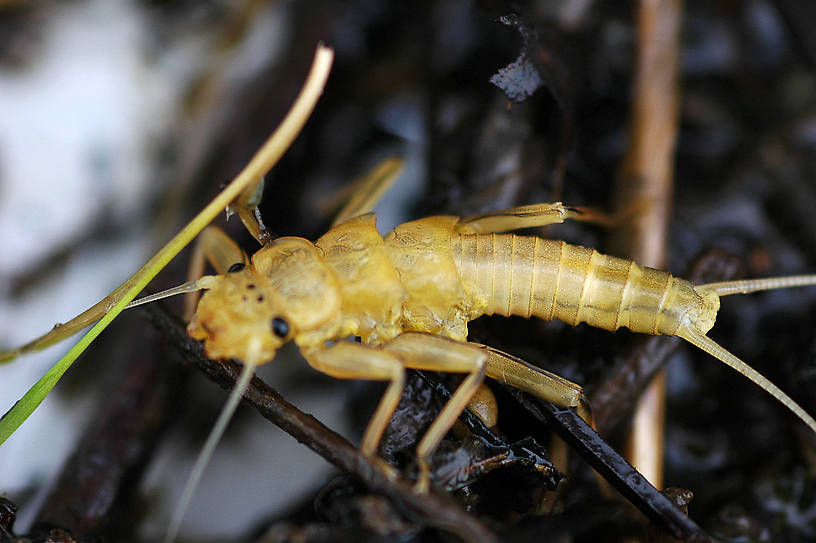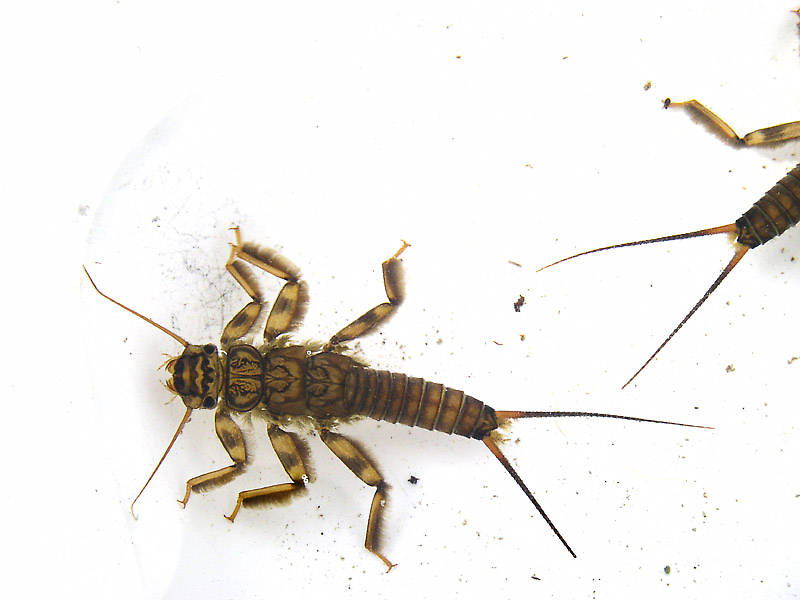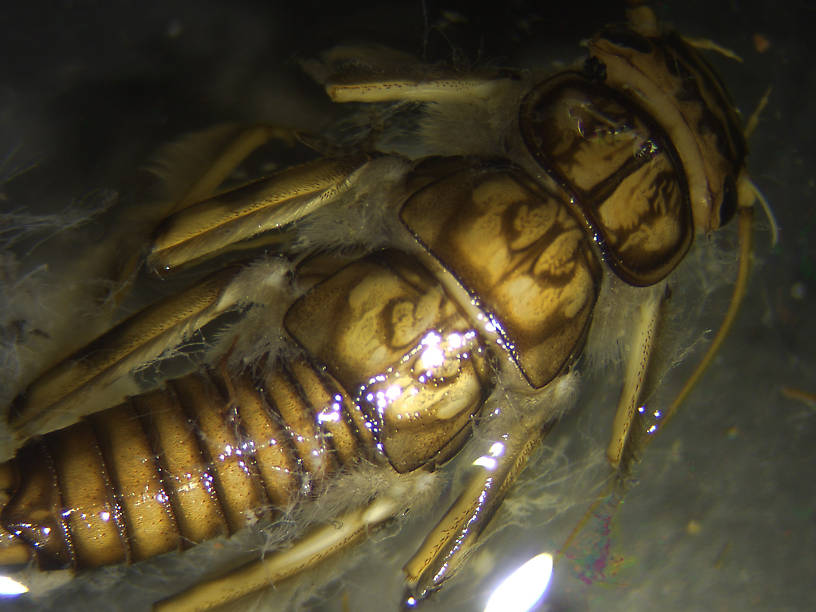
Blue-winged Olives
Baetis
Tiny Baetis mayflies are perhaps the most commonly encountered and imitated by anglers on all American trout streams due to their great abundance, widespread distribution, and trout-friendly emergence habits.
Featured on the forum

This specimen keys to the Epeorus albertae group of species. Of the five species in that group, the two known in Washington state are Epeorus albertae and Epeorus dulciana. Of the two, albertae has been collected in vastly more locations in Washington than dulciana, suggesting it is far more common. On that basis alone I'm tentatively putting this nymph in albertae, with the large caveat that there's no real information to rule out dulciana.

Troutnut is a project started in 2003 by salmonid ecologist Jason "Troutnut" Neuswanger to help anglers and
fly tyers unabashedly embrace the entomological side of the sport. Learn more about Troutnut or
support the project for an enhanced experience here.
Stonefly Species Claassenia sabulosa (Golden Stones)
Claassenia sabulosa is the only species in an exclusively western genus. It is also the West's sole representitave in the subfamily Perlinae. Overall, its the least important species among the common western Perlidae . But it is paradoxically the most important at the time of its greatest activity. This is because it is primarily a late Summer/Fall emerger that can be found as late as October in many locations, long after the hatches of its siblings have been relegated to memory.
No other aquatic insect rivals them for size and sheer calorie content during the time of year when they are on the water. The only other truly large aquatic insects that even come close at this time of year are Dicosmoecus caddis, though they usually hatch later. While approaching in wing length, the caddis doesn't come close in body mass. The angler fortunate to come across a major flight of these critters in the fall is apt to have tremendous action as the trout prepare for winter by feeding ravenously.
No other aquatic insect rivals them for size and sheer calorie content during the time of year when they are on the water. The only other truly large aquatic insects that even come close at this time of year are Dicosmoecus caddis, though they usually hatch later. While approaching in wing length, the caddis doesn't come close in body mass. The angler fortunate to come across a major flight of these critters in the fall is apt to have tremendous action as the trout prepare for winter by feeding ravenously.
Species Range
Egg-Laying behavior
Time of day: Any time
Identification
Besides time of year, the adults of this similarly sized large species can easily be distinguished from the better known western Perlidae by the males having brachypterous (severely shortened) wings and a unique oval hammer on the 9th sternum that is clearly visible without the need for magnification.Because of its nymphs pronounced anal gills it can be confused with Hesperoperla. They can be sorted easiest by looking at their heads. Claassenia has a large "W" shaped mark in front of the ocelli as opposed to the hour glass shaped vertical marking on Hesperoperla. As a Perlinae, the shape of its head's posterior margin often appears concave (due to the raised transverse occipital ridge). This is opposed to the convex shape of the other large western perlids, giving Claassenia a unique appearance. Their antennae and tails are noticeably much longer also.
Specimens of the Stonefly Species Claassenia sabulosa
1 Male Adult
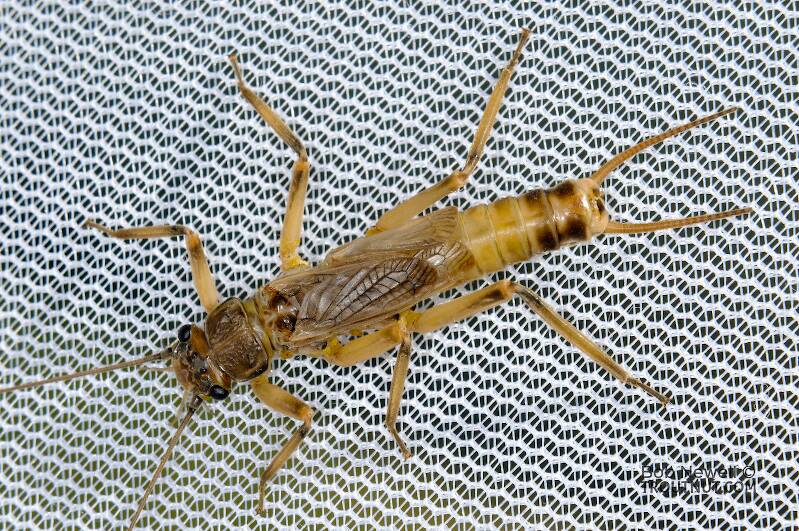
The males have these abbreviated wings. I doubt they can fly but they can run faster than any stonefly I have seen. The also have an interesting habit of jumping.
1 Female Adult
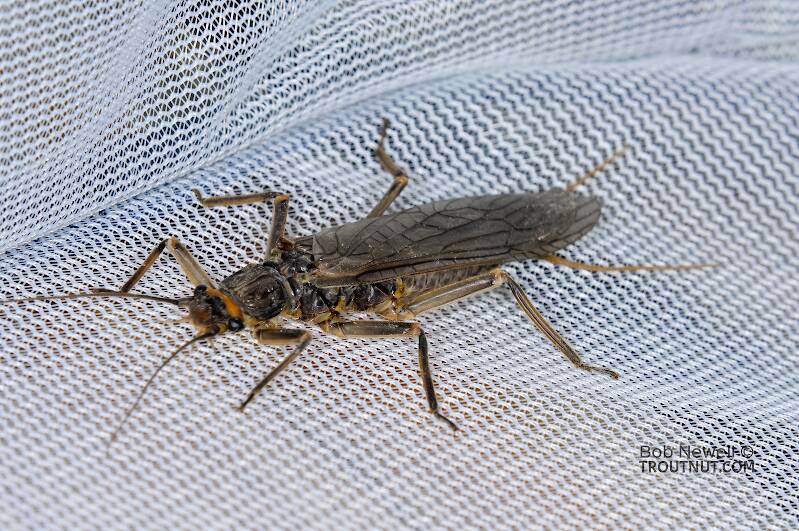
I think this is one of the most poorly understood of the golden stoneflies. It is rare to see any articles about it or fishing the hatch. It emerges late in summer usually on medium to large rivers.The adults are quite secretive but it is something to see the adults run across the water surface. These guys can really run. The males have short wings.The females are up to 1 1/4 inch long rivaling the salmonfly as the largest adult stonefly in the west.The adults are not real golden in color, especially the females which are more of an off yellow to off white abdomen. In handling the adults it is obvious that they shun direct sunlight. I find them by turning over rocks close to the water's edge.
4 Nymphs
Start a Discussion of Claassenia sabulosa
References
- Swisher, Doug and Carl Richards. 2000. Selective Trout. The Lyons Press.
Stonefly Species Claassenia sabulosa (Golden Stones)
Species Range
Common Names
Resources
- NatureServe
- Integrated Taxonomic Information System
- Global Biodiversity Information Facility
- Described by Banks, N. (1900) New genera and species of Nearctic Neuropteroid Insects. Transactions of the American Entomological Society 26, 239–259. [1899]

